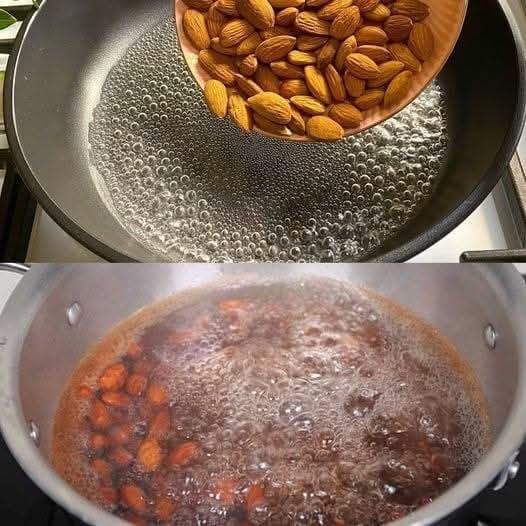ADVERTISEMENT
Instructions:
- Boil the Water:
Bring a pot of water to a rolling boil. - Add the Almonds:
Place the raw almonds in the boiling water for 1 minute. Avoid boiling them longer, as this can soften the almonds. - Drain and Cool:
Quickly drain the almonds and transfer them to a bowl of ice water. This halts the cooking process and cools them down for handling. - Remove the Skins:
Gently squeeze each almond between your thumb and forefinger. The skin should slide off easily. - Dry the Almonds:
Spread the blanched almonds on a clean kitchen towel or paper towel and pat them dry. - Store or Use Immediately:
Use the blanched almonds in your recipe or store them in an airtight container for later use.
Store-Bought vs. Homemade Blanched Almonds
While blanched almonds are available in stores, blanching them at home can be more cost-effective and ensures freshness. It’s also a great way to avoid preservatives or additives sometimes found in pre-packaged almonds.
Tips for Perfect Blanched Almonds:
- Freshness Matters: Use fresh, raw almonds for the best results. Stale almonds can be harder to blanch and may not taste as good.
- Work Quickly: Removing the skins is easiest when the almonds are still slightly damp from blanching.
- Save the Skins: Don’t throw the skins away! Dry them out and grind them into almond meal for smoothies or baking.
Conclusion
Blanching almonds is a simple technique that can make a big difference in your recipes. Whether you’re creating a delicate dessert or a smooth almond-based sauce, blanched almonds provide the perfect base. With their sweeter flavor, refined texture, and appealing appearance, they’re worth the extra effort.
So next time you’re preparing a dish that calls for almonds, consider blanching them to take your cooking to the next level!
ADVERTISEMENT
ADVERTISEMENT
